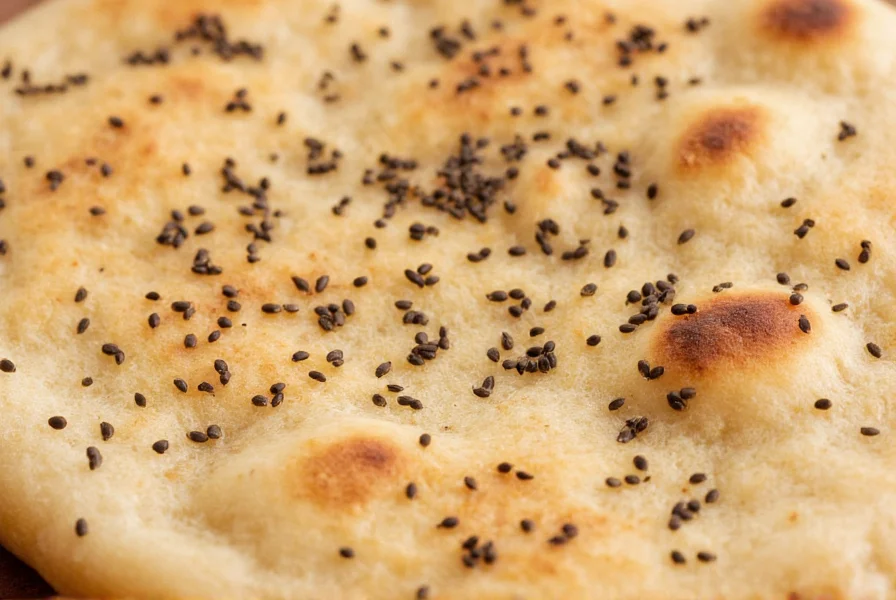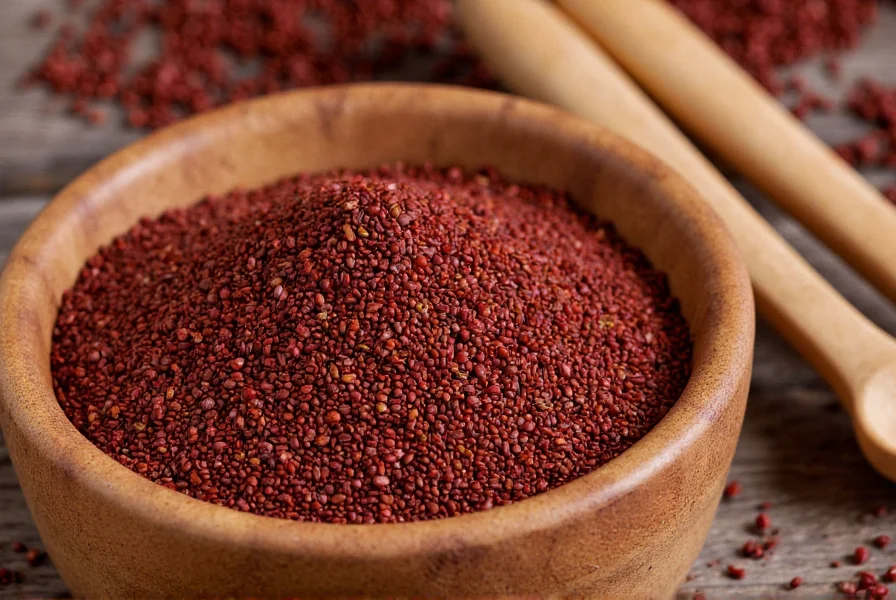Nigella spice, often confused with black sesame or onion seeds, occupies a unique space in global pantries. This small, matte-black seed from the Nigella sativa plant—distinct from the ornamental Nigella damascena—has been seasoning dishes for millennia. Understanding its proper use elevates everything from flatbreads to curries, making it a versatile staple worth exploring.
Demystifying Nigella: Not All “Black Seeds” Are Equal
Many shoppers mistakenly purchase Nigella damascena seeds (commonly sold as “black flower seeds”) thinking they’re culinary-grade. True cooking nigella comes exclusively from Nigella sativa. Key identifiers:
| Characteristic | Nigella sativa (Culinary) | Nigella damascena (Ornamental) |
|---|---|---|
| Seed Texture | Slightly ridged, matte finish | Smoother, shinier surface |
| Aroma | Earthy with onion-like notes | Faint, grassy scent |
| Taste | Peppery, bitter, complex | Mild, nearly flavorless |
| Primary Use | Culinary/medicinal | Gardening only |
Always verify packaging specifies Nigella sativa for cooking. Ornamental varieties lack the distinctive flavor profile essential for authentic recipes.
Flavor Profile and Culinary Applications
Nigella seeds deliver a multifaceted taste experience: initially earthy, developing subtle bitterness, then finishing with warm onion and oregano notes. This complexity explains their role across diverse food traditions:
- Middle Eastern cuisine: Sprinkled on ka’ak breads and mixed into za’atar blends
- Indian cooking: Tempered in hot oil for curries or pressed into naan dough
- Mediterranean dishes: Added to cheese spreads like Turkish peynir or Armenian string cheese
- Central Asian recipes: Incorporated into Uzbek somsa pastries and Tajik breads
Unlike many spices, nigella benefits from both raw and cooked applications. When toasted briefly in oil, its aroma intensifies dramatically—a technique called vaghar in Indian cooking that unlocks deeper flavors.

Practical Cooking Techniques
Maximize nigella’s potential with these chef-tested methods:
- Dry-toasting: Heat seeds in a skillet over medium-low for 60-90 seconds until fragrant. Use in rice dishes or salad toppings
- Oil tempering: Add to hot oil first when making curries—allows flavors to permeate the entire dish
- Dough incorporation: Press into bread surfaces before baking for visual appeal and burst-of-flavor effect
- Infused oils: Steep in warm oil for 20 minutes, then strain for subtle nigella flavor in dressings
Avoid high-heat cooking beyond 2 minutes—prolonged exposure turns nigella unpleasantly acrid. For best results, add during the final minute of cooking or use as a finishing touch.
Storage and Shelf Life Considerations
Nigella’s volatile oils degrade quickly when exposed to elements. Follow these storage protocols:
- Keep in airtight glass containers away from light and heat sources
- Whole seeds maintain potency for 18-24 months; ground nigella lasts only 3-4 months
- Freeze excess seeds in vacuum-sealed bags for up to 3 years without quality loss
- Test freshness by rubbing seeds between fingers—fresh nigella emits immediate earthy aroma
Discard seeds that smell musty or show signs of moisture. Properly stored nigella should retain its characteristic matte-black appearance without oily sheen.
Substitution Guidance for Nigella Spice
While no single spice replicates nigella’s unique profile, these combinations work in emergencies:
- For bread toppings: Equal parts black sesame + crushed caraway (1:1 ratio)
- In curries: Fennel seeds + black mustard seeds (2:1 ratio)
- For pickling: Onion seeds + a pinch of dried thyme
Remember that substitutes only approximate nigella’s complexity. When possible, source authentic Nigella sativa from specialty spice merchants or Middle Eastern grocery stores. Look for seeds with uniform black color and no visible dust (indicating age).

Understanding Regional Names
Navigating international recipes requires recognizing nigella’s many aliases:
- Kalonji: Common in Indian/Pakistani contexts
- Black cumin: Widely used but technically incorrect (true cumin is Cuminum cyminum)
- Chernushka: Russian and Eastern European term
- Sibnith: Traditional Arabic name
- Black caraway: European markets (though unrelated to actual caraway)
When purchasing, verify the Latin name Nigella sativa appears on packaging to ensure culinary suitability. This prevents accidental acquisition of ornamental varieties unsuitable for consumption.
Frequently Asked Questions
Can I eat nigella seeds raw?
Yes, nigella seeds are safe to consume raw, though their flavor fully develops when toasted or tempered in oil. Raw seeds have a more pronounced bitter note that mellows with heat. Many Middle Eastern breads feature raw nigella sprinkled on top before baking, allowing gradual flavor release during cooking.
What’s the difference between nigella and black sesame seeds?
Nigella seeds are matte black with a triangular cross-section and earthy-onion flavor, while black sesame seeds have a shiny surface, oval shape, and nutty taste. Visually, nigella seeds appear smaller and more irregular. Culinary uses differ significantly—nigella works in savory applications like breads and curries, whereas black sesame features in both sweet and savory dishes across East Asian cuisines.
How do I use nigella in baking?
Press nigella seeds into dough surfaces 5 minutes before baking ends for optimal adhesion and flavor release. For breads like naan or lavash, mix 1-2 teaspoons per loaf directly into the dough. In cheese pastries, combine with nigella and a pinch of salt for filling. Avoid overmixing—nigella’s delicate oils dissipate with excessive handling.
Are nigella seeds the same as onion seeds?
No, though nigella shares subtle onion-like notes in its flavor profile. True onion seeds come from the Allium cepa plant and look completely different—smaller, lighter brown, and more elongated. In Indian cooking, “onion seeds” actually refers to nigella (kalonji), creating confusion. For authentic results, use nigella when recipes specify “kalonji” or “black cumin.”










 浙公网安备
33010002000092号
浙公网安备
33010002000092号 浙B2-20120091-4
浙B2-20120091-4